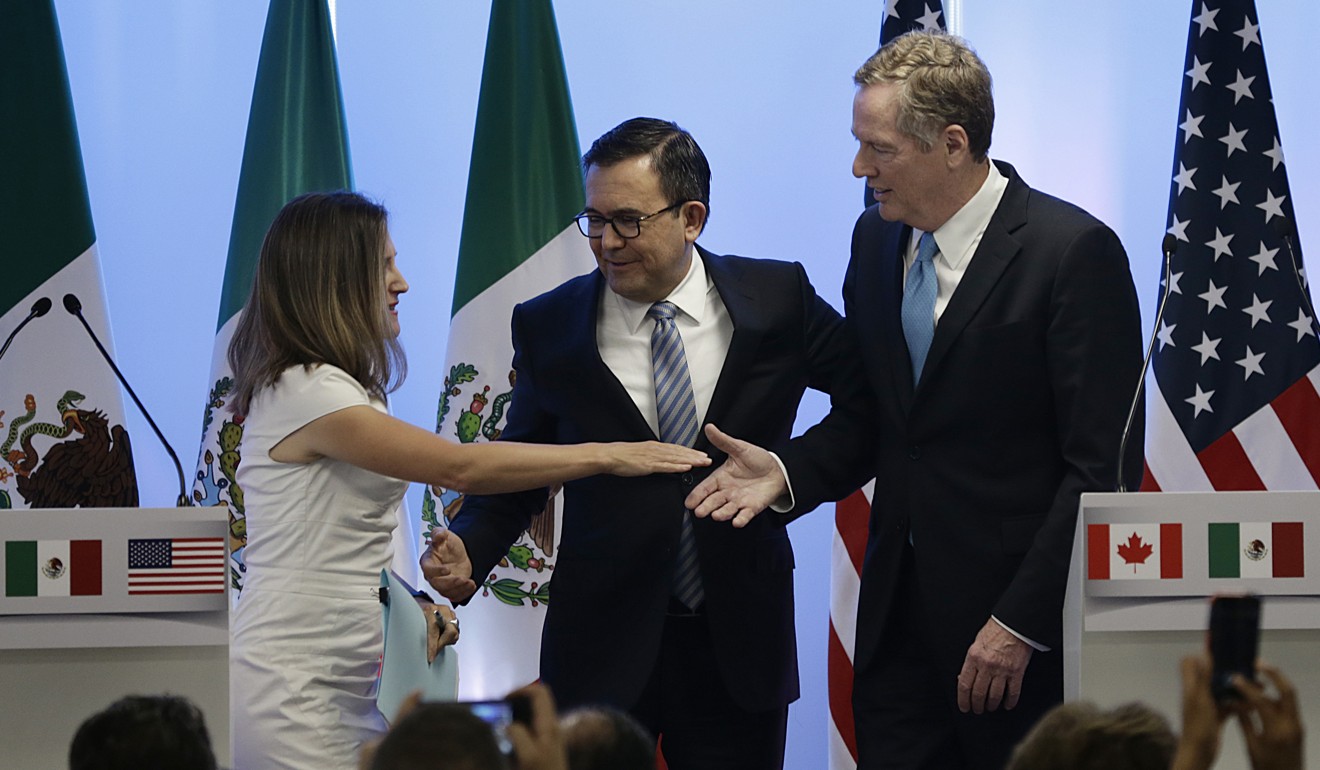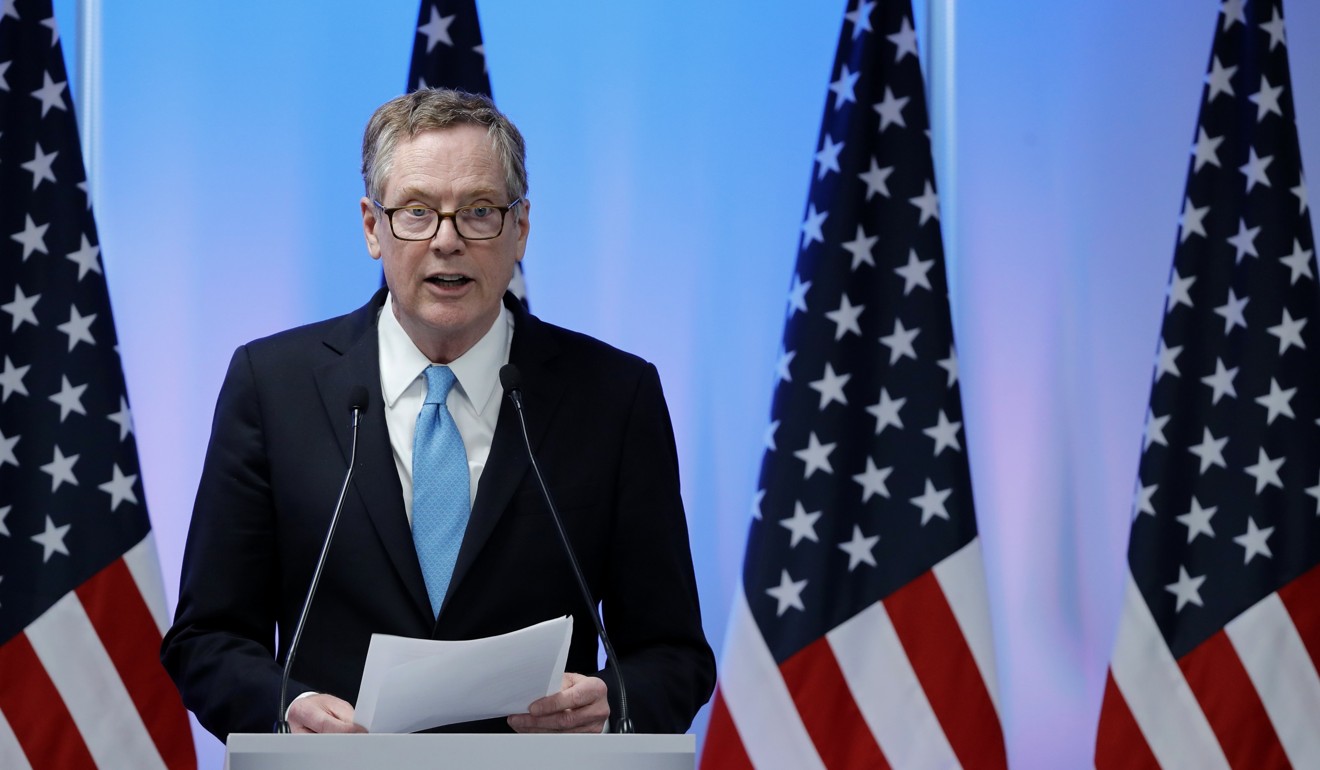
Trump’s top negotiator brands China an ‘unprecedented’ threat to global trading system
‘There is one challenge on the current scene that is substantially more difficult than those faced in the past, and that is China’
China’s economic model represents an “unprecedented” threat to the world trading system that cannot be addressed under current global rules, President Donald Trump’s top trade negotiator said.
“There is one challenge on the current scene that is substantially more difficult than those faced in the past, and that is China,” US Trade Representative Robert Lighthizer said on Monday in a speech in Washington.
“The sheer scale of their coordinated effort to develop their economy, to subsidise, to create national champions, to force technology transfers and to distort markets in China and throughout the world is a threat to the world trading system that is unprecedented.”
The World Trade Organisation (WTO) and the rules that underlie the international trade arbitrator were not designed to deal with China’s current approach to its economy, he said.

“Both China and US are members of the WTO,” Lu said at a regular press conference. “Whether trade practises are proper, there are clear WTO rules.”
Lighthizer said he doesn’t want to jump to any conclusions from an ongoing USTR investigation into
alleged intellectual property violations by China under Section 301 of the Trade Act. The provision allows the president to unilaterally impose tariffs and other restrictions to protect US industries from unfair trade practises by foreign nations.
Lighthizer said that he doesn’t want to prejudge the investigation’s outcome, but he gets “an awful lot of complaints,” especially from American chief executives from major companies about having to hand over their technology to joint-venture partners in China, and on the issue of Chinese piracy.
It was the first major public speech by Lighthizer, 69, who was confirmed in May as USTR. He worked for decades as a trade lawyer, representing clients including US Steel Corp. He served as a deputy USTR under Ronald Reagan, earning a reputation as a hard-nosed negotiator. He also has deep political experience from his time as a senior aide to former Senate Finance Committee Chairman Bob Dole.
Lighthizer’s comments on China may damp speculation that the departure of White House Chief Strategist Steve Bannon, a staunch economic nationalist, would lead to a less hawkish tone on trade from the White House. While Trump has backed down from labelling China a currency manipulator and eased the gas pedal on slapping tariffs on steel imports, Lighthizer said on Monday that changes are coming to a system that leads to trade deficits and fails workers.
“There has been a growing feeling that the system that has developed in recent years is not quite fair to American workers and manufacturing and that we need to change,” he said. “We will have change in trade policy.”

He repeated that the Trump administration prefers bilateral deals to multinational accords. It will pursue one-on-one trade pacts with Asian nations, after Trump withdrew from a trans-Pacific deal in January, and through talks with the UK in the next year or two after it splits from the European Union.
The US has already set in motion Trump’s promise to revamp the North American Free Trade Agreement to tackle trade deficits. The US, Mexico and Canada are preparing for the third round of negotiations to revise the deal from September 23-27 in Ottawa.
Lighthizer has said the US is seeking a major overhaul of the deal that will benefit American workers. The three sides are trying to reach a deal this year before elections in all three nations in 2018 raise political complications.
“We’re moving at warp speed, but we don’t know if we’ll get to a conclusion,” Lighthizer said.

